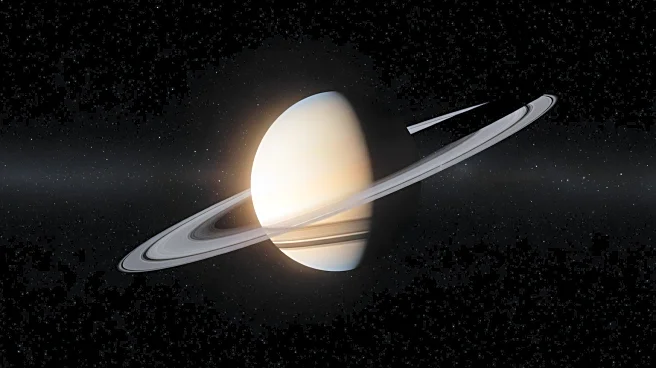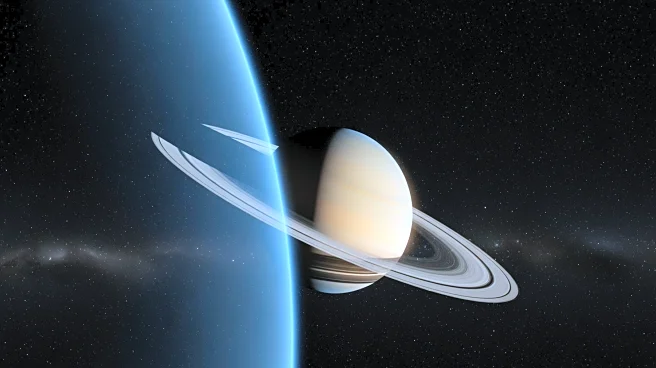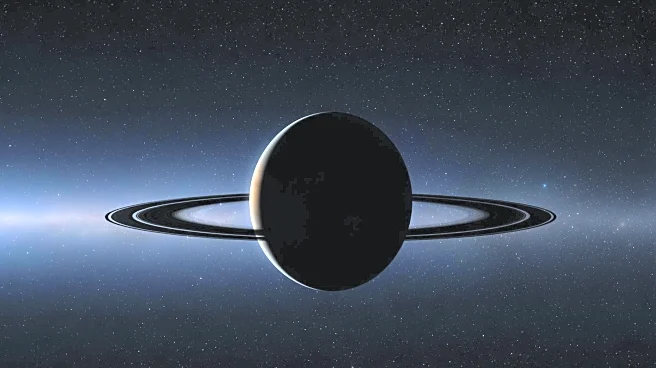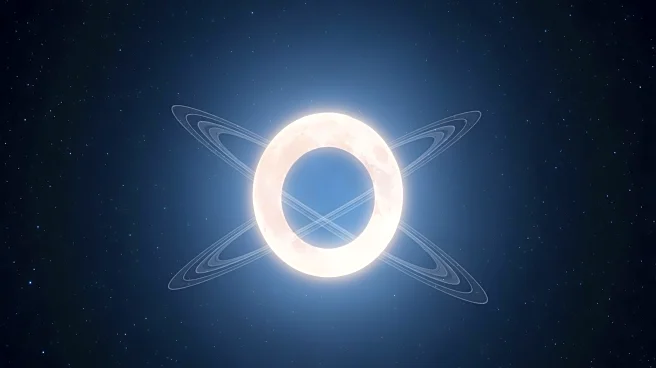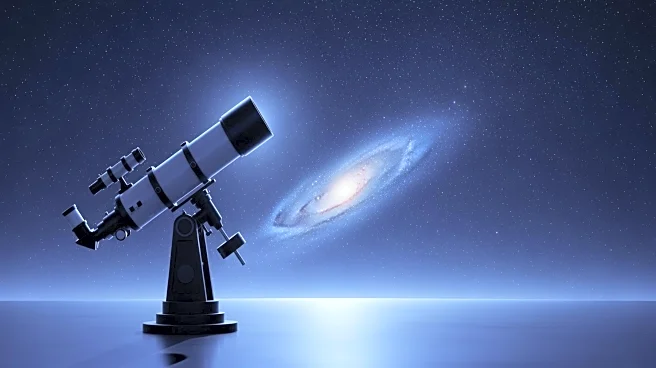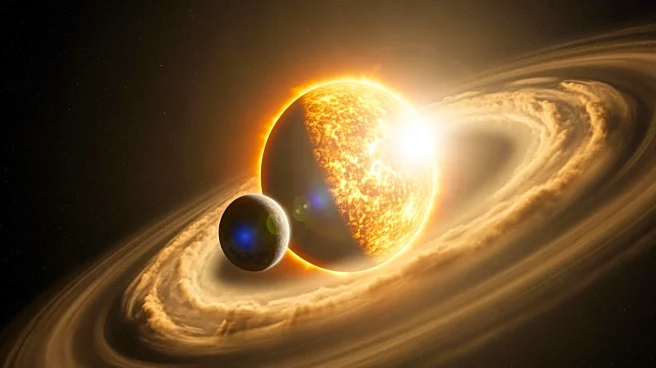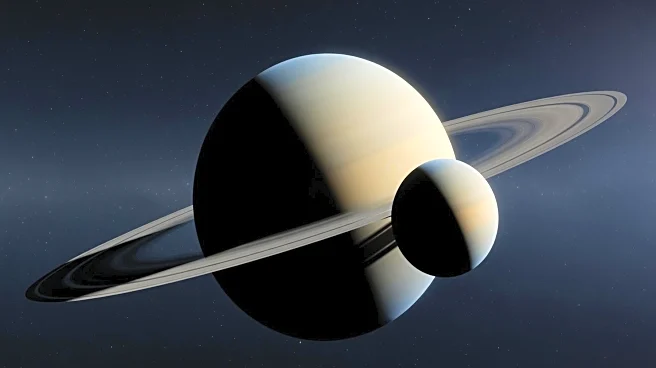What's Happening?
Dave Eicher, Editor Emeritus of Astronomy magazine, highlights the rare celestial event where Saturn's rings appear nearly edge-on from Earth's perspective. This alignment makes the rings almost invisible,
a phenomenon that occurs infrequently. Observers are encouraged to use telescopes to view Saturn during this period, as the rings, typically a prominent feature, are difficult to detect. This event provides a unique opportunity for astronomers and enthusiasts to observe Saturn in a different light, emphasizing the dynamic nature of planetary alignments.
Why It's Important?
The edge-on alignment of Saturn's rings offers a rare observational opportunity that can enhance understanding of the planet's ring system and its dynamics. This event underscores the importance of regular skywatching and the role of amateur astronomers in documenting celestial phenomena. It also highlights the need for public engagement in astronomy, as such events can inspire interest and education in planetary science. The rarity of this alignment emphasizes the dynamic and ever-changing nature of the Solar System.
What's Next?
Observers can continue to monitor Saturn's rings as they gradually return to a more visible orientation. This event serves as a reminder to track planetary movements and alignments, which can lead to further discoveries and insights. Astronomers may use this opportunity to study the composition and structure of Saturn's rings, contributing to ongoing research in planetary science. Public interest in such events can drive educational initiatives and outreach programs to promote astronomy.
Beyond the Headlines
The disappearance of Saturn's rings in this alignment raises questions about the mechanics of planetary systems and the factors influencing ring visibility. This event can spark discussions about the importance of preserving dark skies for astronomical observations and the role of technology in enhancing our understanding of the cosmos. It also highlights the interconnectedness of celestial bodies and the impact of gravitational forces on planetary features.
